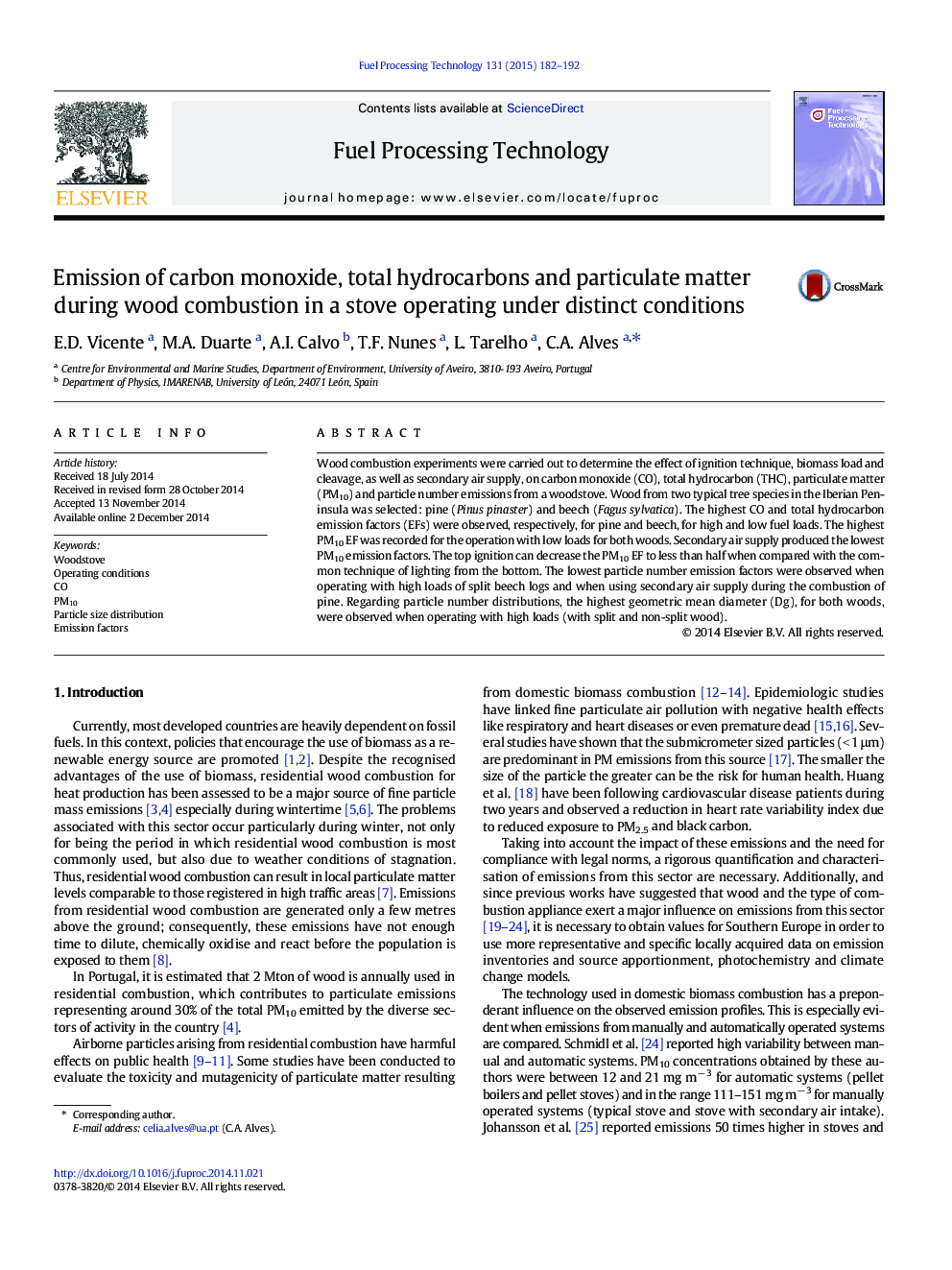| Article ID | Journal | Published Year | Pages | File Type |
|---|---|---|---|---|
| 209355 | Fuel Processing Technology | 2015 | 11 Pages |
•Operating conditions have great influence on emissions.•Top ignition can reduce by 50% the PM10 emissions in relation to bottom lighting.•Secondary air supply produced the lowest PM10 emission factors.•Highest Dg was observed for operation with high loads.
Wood combustion experiments were carried out to determine the effect of ignition technique, biomass load and cleavage, as well as secondary air supply, on carbon monoxide (CO), total hydrocarbon (THC), particulate matter (PM10) and particle number emissions from a woodstove. Wood from two typical tree species in the Iberian Peninsula was selected: pine (Pinus pinaster) and beech (Fagus sylvatica). The highest CO and total hydrocarbon emission factors (EFs) were observed, respectively, for pine and beech, for high and low fuel loads. The highest PM10 EF was recorded for the operation with low loads for both woods. Secondary air supply produced the lowest PM10 emission factors. The top ignition can decrease the PM10 EF to less than half when compared with the common technique of lighting from the bottom. The lowest particle number emission factors were observed when operating with high loads of split beech logs and when using secondary air supply during the combustion of pine. Regarding particle number distributions, the highest geometric mean diameter (Dg), for both woods, were observed when operating with high loads (with split and non-split wood).
